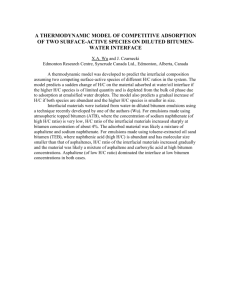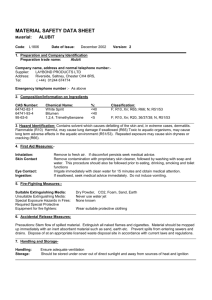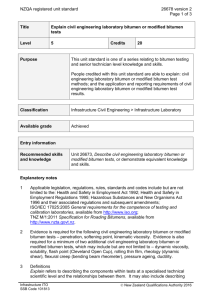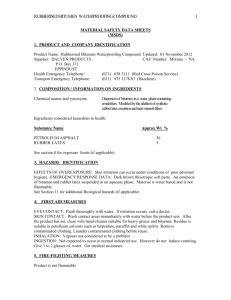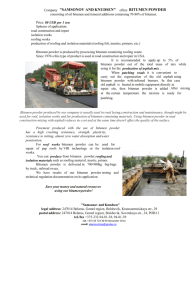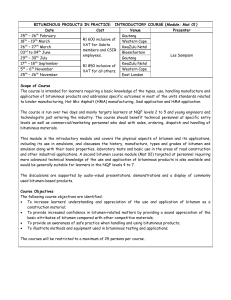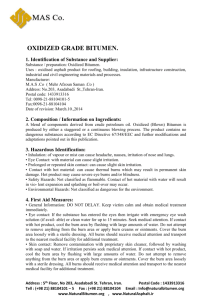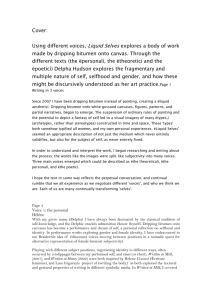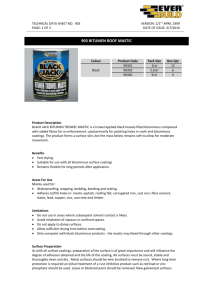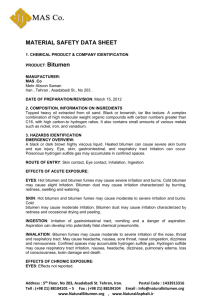instructions to authors for the preparation - The Gibson Group
advertisement
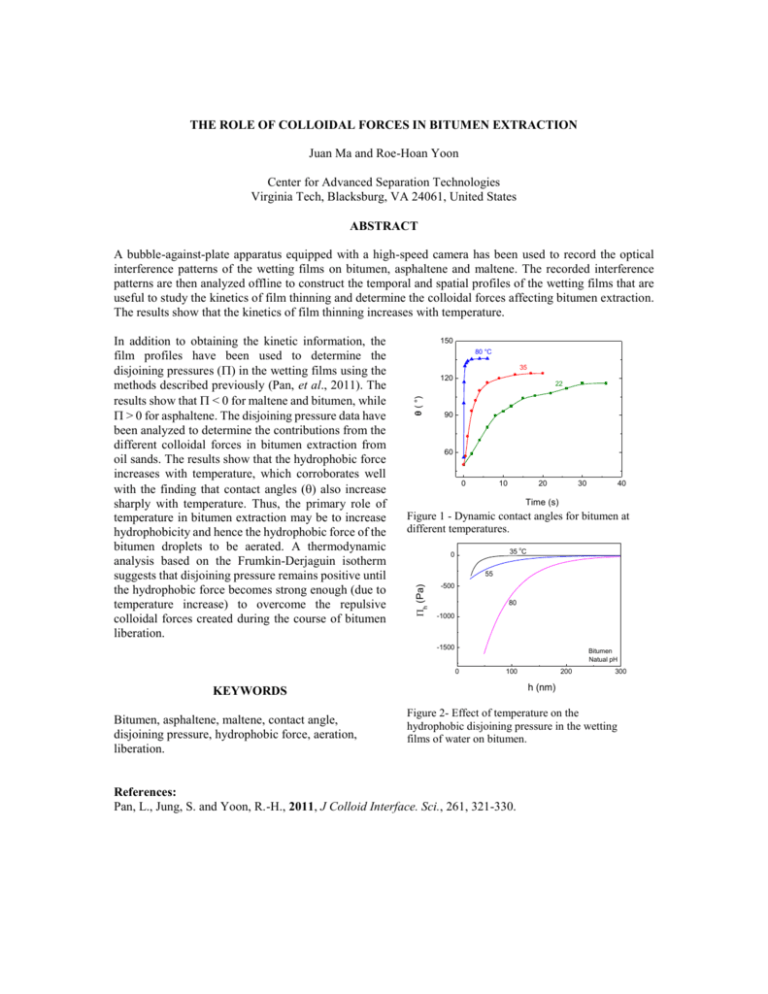
THE ROLE OF COLLOIDAL FORCES IN BITUMEN EXTRACTION Juan Ma and Roe-Hoan Yoon Center for Advanced Separation Technologies Virginia Tech, Blacksburg, VA 24061, United States ABSTRACT A bubble-against-plate apparatus equipped with a high-speed camera has been used to record the optical interference patterns of the wetting films on bitumen, asphaltene and maltene. The recorded interference patterns are then analyzed offline to construct the temporal and spatial profiles of the wetting films that are useful to study the kinetics of film thinning and determine the colloidal forces affecting bitumen extraction. The results show that the kinetics of film thinning increases with temperature. 150 80 °C 35 ( °) 120 22 90 60 0 10 20 30 Time (s) o 35 C 0 55 -500 80 -1000 -1500 Bitumen Natual pH 0 100 200 300 h (nm) KEYWORDS Bitumen, asphaltene, maltene, contact angle, disjoining pressure, hydrophobic force, aeration, liberation. 40 Figure 1 - Dynamic contact angles for bitumen at different temperatures. h (Pa) In addition to obtaining the kinetic information, the film profiles have been used to determine the disjoining pressures () in the wetting films using the methods described previously (Pan, et al., 2011). The results show that < 0 for maltene and bitumen, while > 0 for asphaltene. The disjoining pressure data have been analyzed to determine the contributions from the different colloidal forces in bitumen extraction from oil sands. The results show that the hydrophobic force increases with temperature, which corroborates well with the finding that contact angles () also increase sharply with temperature. Thus, the primary role of temperature in bitumen extraction may be to increase hydrophobicity and hence the hydrophobic force of the bitumen droplets to be aerated. A thermodynamic analysis based on the Frumkin-Derjaguin isotherm suggests that disjoining pressure remains positive until the hydrophobic force becomes strong enough (due to temperature increase) to overcome the repulsive colloidal forces created during the course of bitumen liberation. Figure 2- Effect of temperature on the hydrophobic disjoining pressure in the wetting films of water on bitumen. References: Pan, L., Jung, S. and Yoon, R.-H., 2011, J Colloid Interface. Sci., 261, 321-330.
